Oral cancer is a serious health concern that relates to various cancers affecting the mouth, throat, and surrounding areas. Understanding oral cancer is essential for recognizing its symptoms and risk factors, enabling individuals to seek timely medical intervention. Common oral cancer symptoms can include persistent sores, difficulty swallowing, and unexplained bleeding, all of which warrant immediate attention. Furthermore, individuals may wonder who is at risk for oral cancer; key risk factors include tobacco use, excessive alcohol consumption, and HPV infection. Fortunately, oral cancer treatment options have evolved, providing hope for those diagnosed with this condition.
Oral malignancies represent a significant aspect of public health, impacting many individuals worldwide. These cancers can affect the soft tissues of the mouth and throat, leading to various clinical manifestations that may often go unnoticed. Awareness of the signs of oral tumors, including changes in the mouth and difficulty in normal functions like chewing and swallowing, is crucial for early detection. It’s important to identify which demographics are most susceptible to these conditions, as lifestyle choices greatly influence the incidence of oral malignancies. Advancements in therapies for oral neoplasms have led to improved outlooks for patients, highlighting the importance of education and early diagnosis.
Oral Cancer: An Overview
Oral cancer refers to any cancerous growth that occurs in the oral cavity, which includes the lips, tongue, cheeks, and throat. This type of cancer can encompass various forms, such as squamous cell carcinoma, which is the most prevalent type found in the mouth. Understanding oral cancer is crucial as it can often be overlooked in early stages, leading to more advanced and complicated health issues. Often, the disease can manifest through symptoms like unexplained mouth sores, difficulty swallowing, or persistent pain, prompting a visit to a healthcare professional.
Additionally, recognizing the various symptoms associated with oral cancer can aid in early detection. Early signs often resemble common oral health issues, which can lead to misdiagnosis if not properly assessed. Dentists and medical professionals emphasize the importance of regular dental check-ups to monitor oral health and identify any abnormalities that could signify oral cancer. Awareness is key, and understanding the full spectrum of oral cancer enables patients to seek timely intervention.
Who is at Risk for Oral Cancer?
Certain populations may be more susceptible to developing oral cancer, with risk factors playing a significant role in this increased vulnerability. Individuals who smoke or use tobacco products significantly elevate their risk, as these substances are known carcinogens. Moreover, heavy alcohol consumption has also been linked to higher rates of oral cancer, especially when combined with tobacco use. Understanding who is at risk for oral cancer involves recognizing these behavioral factors that can contribute to the disease’s onset.
Besides lifestyle choices, age and gender are notable risk factors as well. Epidemiological studies indicate that oral cancer is more commonly diagnosed in individuals over the age of 50, although it can occur at any age. Men are statistically more likely to develop oral cancer than women, suggesting a need for targeted awareness and prevention strategies within these demographics. In Prof. Dr. Serhat Yalçın’s article, these risk factors are elaborated upon to better inform the public, emphasizing the importance of lifestyle modifications and proactive health screenings.
Oral Cancer Symptoms: Recognizing Early Signs
Identifying oral cancer symptoms early can significantly enhance treatment outcomes. Common symptoms include persistent sores within the mouth, lumps in the throat or on the tongue, white or red patches on the gums or tongue, and difficulty swallowing. Such early warning signs can sometimes be overlooked as they may mimic less severe oral health issues. Educating oneself on these symptoms empowers individuals to take proactive measures should they experience any concerning changes in their oral cavity.
In light of these symptoms, it’s advisable for individuals to conduct regular self-examinations of their mouths. Observing any unusual alterations, like persistent discomfort, can prompt a visit to a dentist or healthcare provider for further evaluation. Prof. Dr. Serhat Yalçın stresses the importance of awareness surrounding oral cancer symptoms to facilitate early detection and ensure timely treatment, which can be pivotal in improving prognosis and managing health outcomes.
Risk Factors of Oral Cancer: A Closer Look
There are several key risk factors associated with oral cancer that individuals should be aware of. Tobacco use remains the leading cause of oral cancer, whether through smoking cigarettes, chewing tobacco, or using snuff. This direct link between tobacco and various cancers highlights the importance of smoking cessation programs. Additionally, the Human Papillomavirus (HPV), especially strains linked to oropharyngeal cancers, has gained attention as a significant risk factor, particularly among younger individuals.
Furthermore, inadequate oral hygiene and chronic irritation from dental appliances or bad-fitting dentures can also predispose individuals to oral malignancies. Consistent dental care and awareness of oral health are critical components of prevention. In his article, Prof. Dr. Serhat Yalçın emphasizes that understanding these risk factors enables individuals to make informed choices about their lifestyle and oral hygiene, which can substantially reduce their risk of developing oral cancer.
Oral Cancer Treatment: Options and Alternatives
Treatment for oral cancer varies widely based on the stage of the disease, its location, and the overall health of the patient. Surgical intervention is often a primary method, where the tumor and surrounding tissues may be removed. For advanced stages, additional therapies such as radiation and chemotherapy may be required. The comprehensive treatment approach often involves a multidisciplinary team of healthcare providers, including surgeons, oncologists, and dental specialists, to craft personalized treatment plans.
Moreover, emerging treatments, such as targeted therapy and immunotherapy, are gaining traction in clinical settings. These methods focus on enhancing the body’s immune response to combat cancer cells more effectively. In Prof. Dr. Serhat Yalçın’s article, options like these are discussed, providing essential information that can help patients understand the various treatment pathways available for oral cancer, ensuring they are well-informed about their health choices.
Preventing Oral Cancer: Strategies and Tips
Preventing oral cancer involves a combination of lifestyle changes and regular screenings. Quitting tobacco and reducing alcohol intake are the most significant steps individuals can undertake to lower their risk. Additionally, incorporating a diet rich in fruits and vegetables can contribute positively to oral health, as certain nutrients are known to bolster immunity and repair cellular damage. Regular dental check-ups play a vital role, as they often serve as a first line of defense against developing oral health issues.
Furthermore, practicing good oral hygiene can reduce the risk of developing oral cancer. Brushing teeth at least twice a day, flossing regularly, and avoiding excessive sun exposure on the lips by using protective balms can all help. Prof. Dr. Serhat Yalçın discusses these preventive measures in detail, encouraging individuals to adopt healthier habits that not only guard against oral cancer but improve overall oral health.
The Importance of Early Detection in Oral Cancer
Early detection of oral cancer can dramatically improve treatment outcomes and survival rates. Regular screenings by a dental professional can help identify abnormalities that are not visible during self-examinations. Patients who are at high risk due to factors like tobacco use or a family history of cancer should seek annual check-ups to monitor their oral health closely. Education about the symptoms and risk factors associated with oral cancer can facilitate earlier intervention.
Moreover, public awareness campaigns can play a critical role in promoting the importance of early detection. Community outreach programs may offer free screenings and information about oral cancer, targeting populations at higher risk. Prof. Dr. Serhat Yalçın highlights these initiatives, emphasizing how collective efforts can lead to a greater understanding and recognition of oral cancer, ultimately fostering proactive health behaviors within communities.
Understanding Oral Cancer Research and Innovations
Ongoing research into oral cancer is vital in developing innovative treatment modalities and improving patient outcomes. Emerging technologies such as AI and machine learning are being employed to aid in early detection and diagnosis, significantly enhancing survival rates. Innovations in regenerative medicine are also being explored, focusing on creating more effective therapies and minimizing recovery times post-treatment.
Additionally, clinical trials are crucial for expanding the treatment options available to patients. Research not only aids in the identification of new drugs but also explores the efficacy of existing treatments in diverse populations. Prof. Dr. Serhat Yalçın discusses how these advancements reflect a commitment to combating oral cancer through scientific inquiry and innovation, paving the way for a future where treatment options are ever-expanding and more personalized.
Coping with the Diagnosis of Oral Cancer
Receiving a diagnosis of oral cancer can be overwhelming for patients and their families. Emotions of fear, confusion, and uncertainty are common, necessitating a support system around the individual. Engaging with support groups and counseling can provide an avenue for patients to express their thoughts and feelings, helping to mitigate feelings of isolation that often accompany such a diagnosis.
Moreover, education about the disease and its treatment can empower patients to take control of their health journey. In Prof. Dr. Serhat Yalçın’s article, the psychological aspects of facing oral cancer are highlighted, stressing the importance of a holistic approach to treatment that encompasses both physical and emotional health. Understanding that they are not alone can significantly enhance their coping strategies and improve their quality of life during treatment.
Frequently Asked Questions
What are the common oral cancer symptoms to look out for?
Common oral cancer symptoms include persistent mouth sores, lumps or thickening in the mouth or throat, difficulty swallowing or chewing, and changes in the voice. Additionally, white or red patches in the oral cavity and unexplained bleeding can also be indicative of oral cancer. Early detection of these symptoms is crucial for effective treatment.
Who is at risk for oral cancer and what are the key risk factors?
Individuals who smoke, use tobacco products, or consume excessive alcohol are at a higher risk for oral cancer. Additionally, HPV (human papillomavirus) infection, sun exposure to the lips, and a history of oral cancer in the family are significant risk factors. Regular dental check-ups and monitoring for early signs can aid in prevention.
What are the available oral cancer treatment options?
Oral cancer treatment options vary depending on the stage and location of the cancer. Common treatments include surgery to remove tumors, radiation therapy to kill cancer cells, and chemotherapy to shrink tumors. Innovative therapies, such as targeted therapy and immunotherapy, are also being explored for treating oral cancer.
How can understanding oral cancer help in prevention?
Understanding oral cancer, including its risk factors and symptoms, can significantly aid in prevention. Educating oneself about the dangers of tobacco, maintaining good oral hygiene, and avoiding excessive alcohol consumption are proactive steps that can reduce the likelihood of developing oral cancer.
What lifestyle changes can help reduce the risk factors of oral cancer?
To reduce the risk factors of oral cancer, individuals should quit smoking, limit alcohol intake, and maintain a balanced diet rich in fruits and vegetables. Regular dental visits and self-examinations to monitor for unusual changes in the mouth can also help in early detection and prevention of oral cancer.
| Key Point | Details |
|---|---|
| Definition of Oral Cancer | Oral cancer refers to cancer that develops in any part of the oral cavity such as the lips, gums, tongue, or the floor of the mouth. |
| Risk Factors | Factors include tobacco use, excessive alcohol consumption, certain viral infections (like HPV), and poor oral hygiene. |
| Expert Insights | Prof. Dr. Serhat Yalçın provides expert analysis on oral cancer based on his extensive experience in oral and maxillofacial surgery. |
| Treatment Alternatives | Treatment options may include surgery, radiation therapy, chemotherapy, and targeted therapies depending on the stage and type of cancer. |
| Public Awareness | Educational articles like Prof. Dr. Yalçın’s play a crucial role in raising awareness about oral cancer and its prevention. |
Summary
Oral cancer is a significant health concern that affects many individuals worldwide. Understanding its definition, risk factors, and treatment options is crucial for effective prevention and management. Through comprehensive insights provided by experts like Prof. Dr. Serhat Yalçın, we can better navigate the complexities surrounding oral cancer, ensuring more people are informed and able to seek timely intervention if needed.


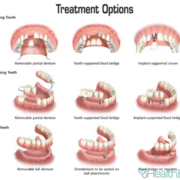
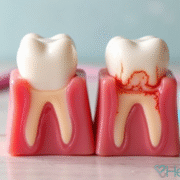
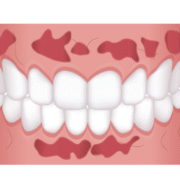
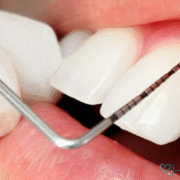




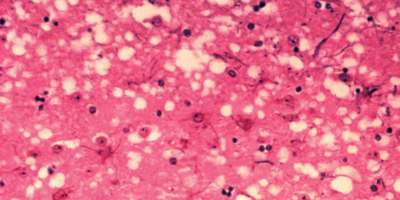





Comments